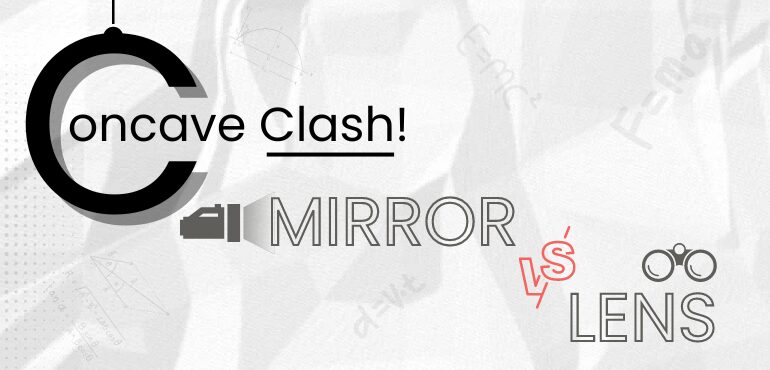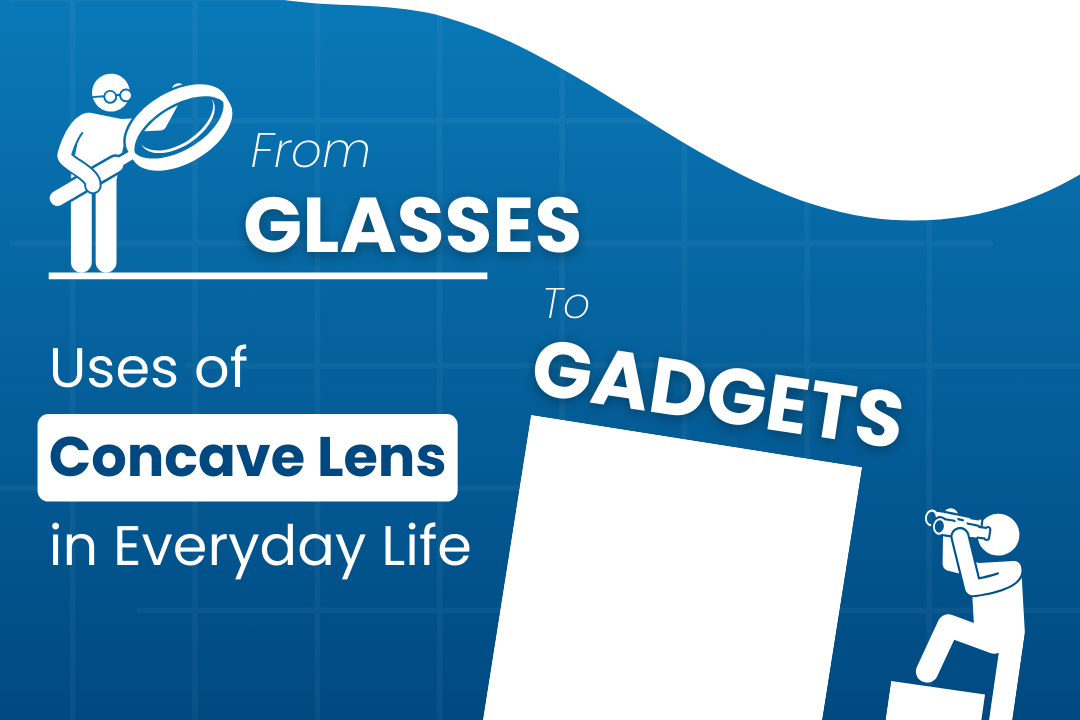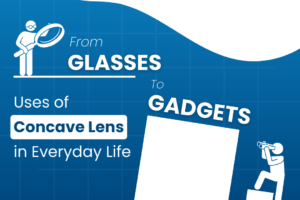
Optics, a branch of physics, deals with the study of light and its interaction with various materials. Two common optical devices are concave mirrors and concave lenses. Though both are “concave” in shape, their behavior, applications, and the principles governing their operation are quite different.
Understanding these differences is crucial for students, professionals, and enthusiasts who work with optical systems. In this article, we will explore the distinctions between concave mirrors and concave lenses, delving into their structure, function, and applications.
What is a Concave Mirror?
A concave mirror, also known as a converging mirror, has a reflective surface that curves inward like the inside of a sphere. The reflecting surface faces inward, and light rays that strike the mirror are reflected towards a single point called the focal point. Concave mirrors are commonly used in devices where light needs to be focused, such as telescopes, headlamps, and shaving mirrors.
Characteristics of Concave Mirrors
Concave mirrors can form magnified images, making them useful in various optical devices, here are a few characteristics:
- Shape: Curved inward, resembling the inner surface of a sphere.
- Reflection: Reflects light rays towards a focal point.
- Focal Point: The point where parallel rays of light meet after reflection.
- Image Formation: Can form real or virtual images depending on the object’s position relative to the focal point.
- Magnification: Capable of magnifying objects when placed close to the mirror.
Applications of Concave Mirrors
Concave mirrors are commonly used in devices that require light focusing, some of the applications are mentioned below:
- Telescopes: Used to gather and focus light from distant stars and planets.
- Headlights: In vehicles, concave mirrors focus light into a parallel beam for better illumination.
- Shaving Mirrors: Provide magnified images for precision tasks.
- Solar Furnaces: Concentrate sunlight to a specific point, generating heat for various applications.
What is a Concave Lens?
A concave lens, also known as a diverging lens, has at least one surface that curves inward, causing light rays passing through it to spread out or diverge. Unlike concave mirrors, concave lenses are typically used to spread light rather than focus it. The uses of concave lens are widespread, including in optical devices such as eyeglasses, cameras, and binoculars.
Characteristics of Concave Lenses
Concave lenses always produce virtual, reduced images, ideal for applications like vision correction, other characteristics are listed:
- Shape: Curved inward, with at least one surface thinner at the center than at the edges.
- Refraction: Bends light rays outward, causing them to diverge.
- Focal Point: The point from which diverged rays appear to originate; the focal point is virtual.
- Image Formation: Always forms a virtual, erect, and reduced image.
- Magnification: Reduces the size of the image.
Applications of Concave Lenses
Concave lenses are essential in optical systems, a few applications are mentioned below:
- Eyeglasses: Correct nearsightedness by diverging light before it enters the eye.
- Cameras: Used in combination with convex lenses to focus light and control image formation.
- Binoculars: Helps in adjusting focus and improving image quality.
- Laser Divergence Control: In laser systems, concave lenses are used to control the divergence of laser beams.
Key Differences Between Concave Mirrors and Concave Lenses
To better understand the differences between concave mirrors and concave lenses, let’s compare them across several key parameters:
| Feature | Concave Mirror | Concave Lens |
|---|---|---|
| Nature | Reflective surface curved inward | Refractive surface curved inward |
| Function | Converges light rays to a focal point | Diverges light rays away from a focal point |
| Image Formation | Can form real or virtual images | Always forms virtual images |
| Focal Point | Real focal point | Virtual focal point |
| Magnification | Can magnify or reduce image size | Always reduces image size |
| Application | Used in telescopes, headlights, etc. | Used in eyeglasses, cameras, etc. |
| Use in Correction of Vision | Not used in vision correction | Used to correct nearsightedness |
| Image Orientation | Can be inverted or erect | Always erect |
| Ray Diagram Complexity | Requires consideration of reflection angles | Requires consideration of refraction angles |
| Example in Daily Life | Shaving mirror | Eyeglasses for myopia |
Conclusion
Concave mirrors and concave lenses, though sharing a similar “concave” designation, serve different purposes and operate on distinct optical principles. A concave mirror, with its inward reflective surface, converges light to a focal point and is widely used in applications requiring the focusing of light. In contrast, a concave lens, with its inward refractive surface, diverges light rays and is primarily used in devices that require the spreading or correction of light paths.
The distinction between these two optical devices is crucial in fields such as astronomy, photography, ophthalmology, and many engineering applications. By understanding the differences in their structure, function, and applications, one can better appreciate the roles these devices play in various technologies and their impact on our daily lives.
Whether you’re using a concave mirror to focus light in a telescope or a concave lens to correct vision, the underlying physics remains a testament to the fascinating world of optics.








